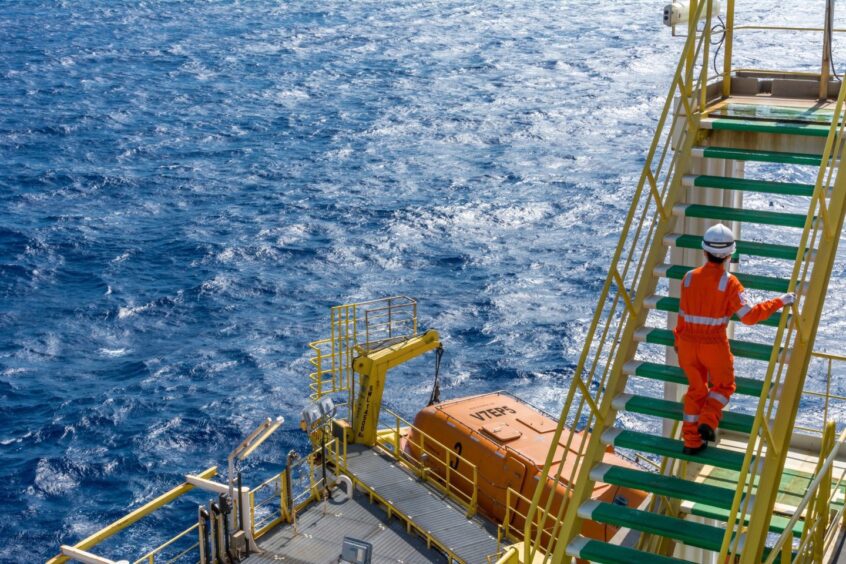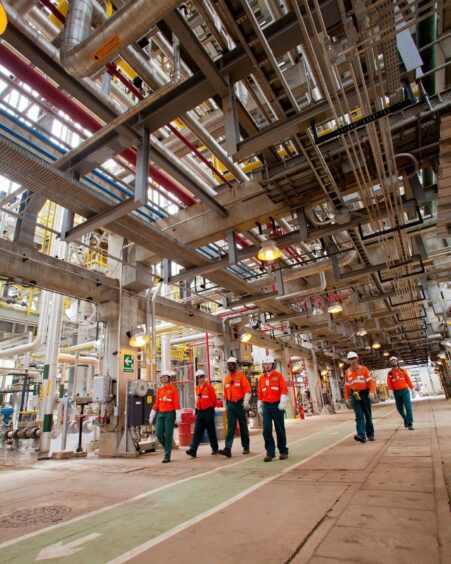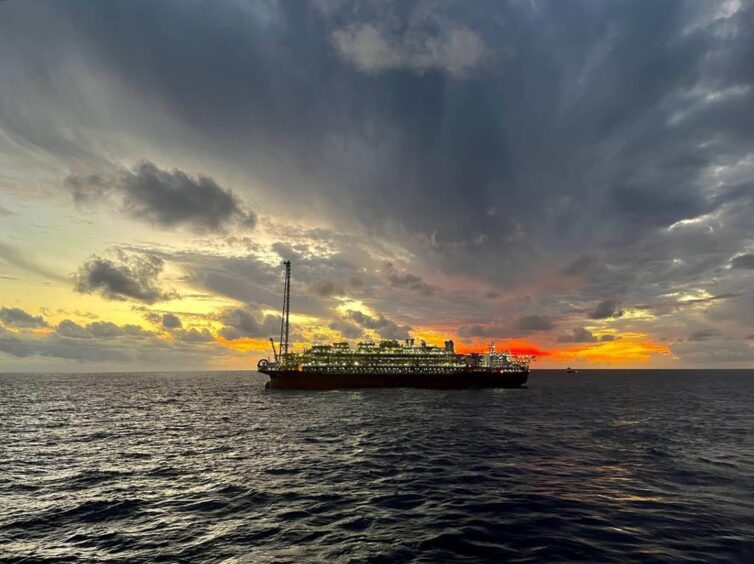
Petrobras is scaling up investments in its operations, but can it escape the shadow of state interference?
The company’s strategic plan runs from 2024 to 2028. The plan involves investments of $102 billion over the five-year period, up 31% from the previous plan. It has the stated aim of preparing the company for the future and making the company stronger, in order to deliver a “fair and responsible energy transition”.
Exploration and production accounts for 72% of the spending, while refining and marketing make up 17%.
Welligence Energy Analytics vice president Andre Fagundes noted that most of spending was going to projects already in progress, particular the deployment of 14 FPSOs by 2028. Of these, 11 are in the pre-salt.
The question of state interference is the “fundamental question”, Institute of the Americas vice president for energy Jeremy Martin told Energy Voice. The state has the golden share in the company and can appoint major executive positions, including the CEO.
Under the last president, Petrobras saw a number of CEOs appointed and removed in rapid succession.
President Luiz Inacio Lula da Silva was elected in late 2022 and, in early 2023, appointed Jean Paul Prates to be the new CEO of Petrobras. The two are both from the same Workers’ Party, with Prates resigning from a role as senator to take the Petrobras position.
Lula has plans and will need to secure cashflow from Petrobras to ensure delivery. One of the key drivers outlined in its strategic plan was to maintain debt below $65bn. Fagundes said its operating cash flow should be sufficient to meet its financial plans – and stick to this debt limit.
Strategic needs
“Petrobras has a huge role as a domestic driver,” Martin said. “Lula made it clear when he was elected that Petrobras would be the driver. It’s the largest R&D company in Brazil, if not in Latin America.”
The Brazilian president has seen the opportunity that Petrobras offers, Martin continued. “The pre-salt is probably the most prolific play in the hemisphere. Lula has commitments and social programmes … he can achieve those better if he’s got this oil production in the pre-salt growing exponentially.”
Petrobras’ plan also aligns with various political needs beyond generating massive dividends. The company is investing in sustainability, in lower carbon production and refineries.
Underpinning these moves, Martin said, was that Petrobras is going “full speed ahead to generate income. There’s still political horse trading, does the plan favour the north, which is where Lula has more support? But it’s focusing on core business.”
Refining is perhaps the most visible impact for Petrobras’ involvement in the local economy. The company plans to spend $17bn in this sector over five years, with a focus on increasing diesel production and cutting emissions.
“If the price of Brent goes up, that’s the worst case scenario in a sense,” Welligence’s Fagundes said. “Gasoline prices will go up and inflation will go up. That causes problems for the government, which then causes problems for company executives.”
Investors see little reason to invest in Brazilian refining capacity, given state interference, he continued. As a result, Petrobras has to shoulder the responsibility.
Production growth
Given Petrobras’ need to sustain Brazil’s objectives, both directly through investments in refining and indirectly through payments to the exchequer, it has a clear need for continued growth.
Welligence’s Fagundes said the pre-salt would continue to be the focus. There are another six FPSOs due to start on Buzios while Mero will gain two.
“We’re quite confident those will be delivered, although there may be delays. The two Sergipe FPSOs, SEAP-1 and -2, have been pushed to the end of the plan, in 2028, and may see further delays,” he said.
Intituto Nacional de Óleo e Gás Geosciences (INOG) researcher Cleveland M. Jones said Petrobras plans had been timid. The new strategic plan is a “welcome change”, he said.
“I criticised [previous plans] because Petrobras was shrinking, particularly its exploration budget. This was totally inconceivable given the backlog of prospects it has. They were failing and this is a step in the right direction.”
Petrobras ended 2023 at around 2.2 million barrels of oil equivalent per day of production. It will scale up to 2.8mn boepd this year and 3.1mn boepd in 2028.
Pre-salt promise
Further growth, beyond the current pipeline, may be a challenge. “Under our analysis, we see Brazilian production starting to decline around 2029-30,” Welligence’s Fagundes said. “Given how long it takes to develop a big field, they need to start finding new reserves.”
Fagundes was sceptical that there was much more to find in the pre-salt. “The big discoveries have been made in the pre-salt”, he said, with some recent exploration disappointments. “In the pre-salt polygon, some smaller accumulations are not fiscally attractive under the PSC terms. Petrobras has to continue replacing its reserves and the pre-salt is not keeping up.”
INOG’s Jones was more positive about further development in the pre-salt. “There’s a strong tendency not to declare discoveries on exploration wells, because regulator ANP then requires companies to make all sorts of investments. Companies will be 98% sure, but then say they have to do more work.”
“The potential is still large and there’s good infrastructure in the Campos and Santos basins, they’re covered in pipelines and it’s a well known area,” he continued. “The wells are high quality with sub $5 per barrel lifting costs, that’s considerably less than the costs for Saudi Arabia.”
There are 30 wells in Brazil’s offshore that are producing at more than 40,000 bpd each, Jones said. And there are 15-20 wells producing more than 50,000 bpd. “These are out of this world. They justify any and all efforts for a more aggressive plan.”
Expanding outwards
The company began drilling the Pitu Oeste well in December 2023, off Rio Grande do Norte. Petrobras has also been keen to explore in the northern Foz do Amazonas Basin, near French Guiana.
“It’s an environmentally sensitive area and Petrobras has struggled to make progress, it had a rig on location for six months last year before giving up. It was a mess and not moving as quickly as they thought,” Fagundes said.
The Welligence executive said the Pelotas Basin was also being considered as a potential analogue to Namibia’s Orange Basin. “Companies have signed up to carry out studies, but there aren’t well commitments. I don’t think it’s close to the level of interest in the pre-salt and the reservoirs are likely to be compartmentalised.”
Another area of interest reignited by the strategic plan is Petrobras’ refound appetite for exploration outside Brazil.
Jones, for one, was not convinced. “I think Petrobras is wrong to make this move, it’s to placate political needs. Petrobras doesn’t need diversification, there are giant fields still to be discovered and that’s what the company is good at. Why go through this again?”
The INOG official also played down the affiliation with OPEC, announced late last year. He described Brazil’s move as “geopolitical posturing”, noting it would help trade relations – in places such as Africa – but would have no impact on its oil plans.
End of the Car Wash
Brazil has made progress in moving beyond the major corruption scandal known as Lava Jato, or Car Wash. The case began in 2014, focused on a fuel station in Brasilia. The investigation grew and grew, embroiling President Dilma Rousseff.
In 2016, Lula – who had been president from 2003 to 2010 – was also sucked, resulting in a 12-year prison sentence. The Supreme Court quashed the conviction in 2021, with the investigation facing allegations that it had become increasingly politicised.
Institute of the Americas’ Martin said the Car Wash scandal was unique in the way in which it was so wide ranging. “The Car Wash is more or less in the rear view mirror. Graft is always part of the major projects, but the Car Wash took it to a different level.”
Local challenges
While there seems little that will derail Brazil’s current focus on executing development projects, there are some concerns around local content rules.
The government cut requirements in 2017, easing the burden on foreign investors. Fagundes said the government might be tempted to tweak the rules, but would be unlikely to do so on already contracted projects.
“I hope the authorities have learnt their lesson from previous attempts, where some FPSOs took more than 10 years to build and corruption was an issue,” he said. “The Brazilian industry is not capable of taking over the whole FPSO construction process, although there may be scope to build specific modules.”
Jones agreed, calling for incentives rather than mandates. Pushing local content too far and too fast will cause delays and push projects over budget, he warned.
“Petrobras has learnt the lesson,” he said. “It was able to award some contracts for recycling vessels to the local naval industry, despite not being obligated. This is a wiser path.”
Lula’s support for Petrobras, and his political desires within Brazil, have aligned in the current strategic plan. The company has learnt lessons about how to navigate the intersection of politics, commerce and geology. For now, at least, objectives are aligned and Petrobras is on the rise.

 © Supplied by Petrobras
© Supplied by Petrobras © Supplied by Petrobras
© Supplied by Petrobras